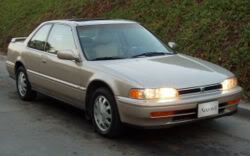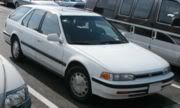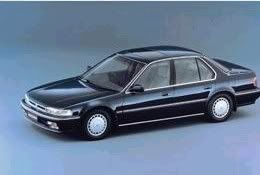 |
 |
|
| Production | 1990–1993 | |
|---|---|---|
| Body style | 2-door coupe 4-door sedan 5-door station wagon | |
| Engine | 2.2L L4 SOHC PFI 16V F22A | |
| Engine Oil | 4.0 qts 10w30 recommend (depending on geographical location and weather) |
|
| Transmission | 4-speed automatic 5-speed manual |
|
| Automatic Transmission | 2.5 qts | |
| Manual Transmission | 2.0 qts | |
| Wheelbase | 107.1in | |
| Length | 185.2in | |
| Width | 67.1in | |
| Height | 54.1in (coupe) 54.1in (sedan) |
|
| Fuel capacity | 17 US gallons | |
| Wheel Bolt Pattern | 4 on 114.3(4.5 in) for DX & EX, 4 on 100 for LX | |
| Stock Tire Size | 195/60/R15 (EX) 185/70/R14 (DX/LX) | |
| Coolant | 2 gal. (1 gal Coolant, 1 gal Water) |

